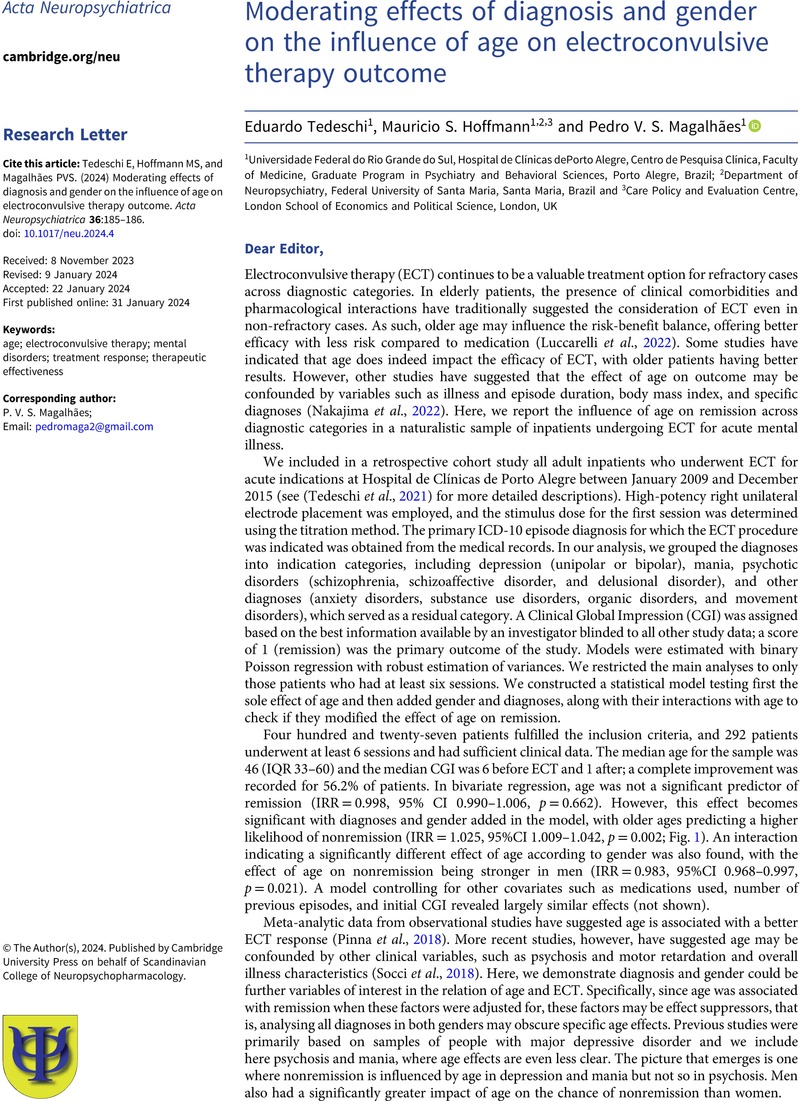Affiliation: Universidade Federal do Rio Grande do Sul, Hospital de Clínicas dePorto Alegre, Centro de Pesquisa Clínica, Faculty of Medicine, Graduate Program in Psychiatry and Behavioral Sciences, Porto Alegre, Brazil
Department of Neuropsychiatry, Federal University of Santa Maria, Santa Maria, Brazil
Care Policy and Evaluation Centre, London School of Economics and Political Science, London, UK
